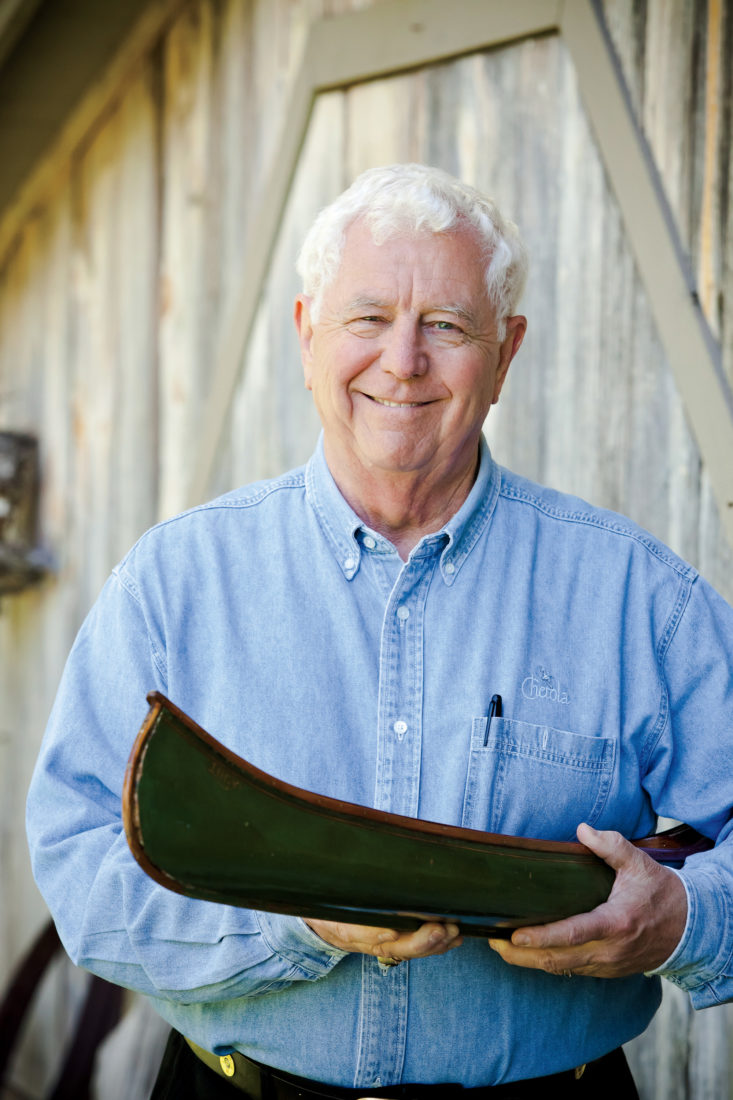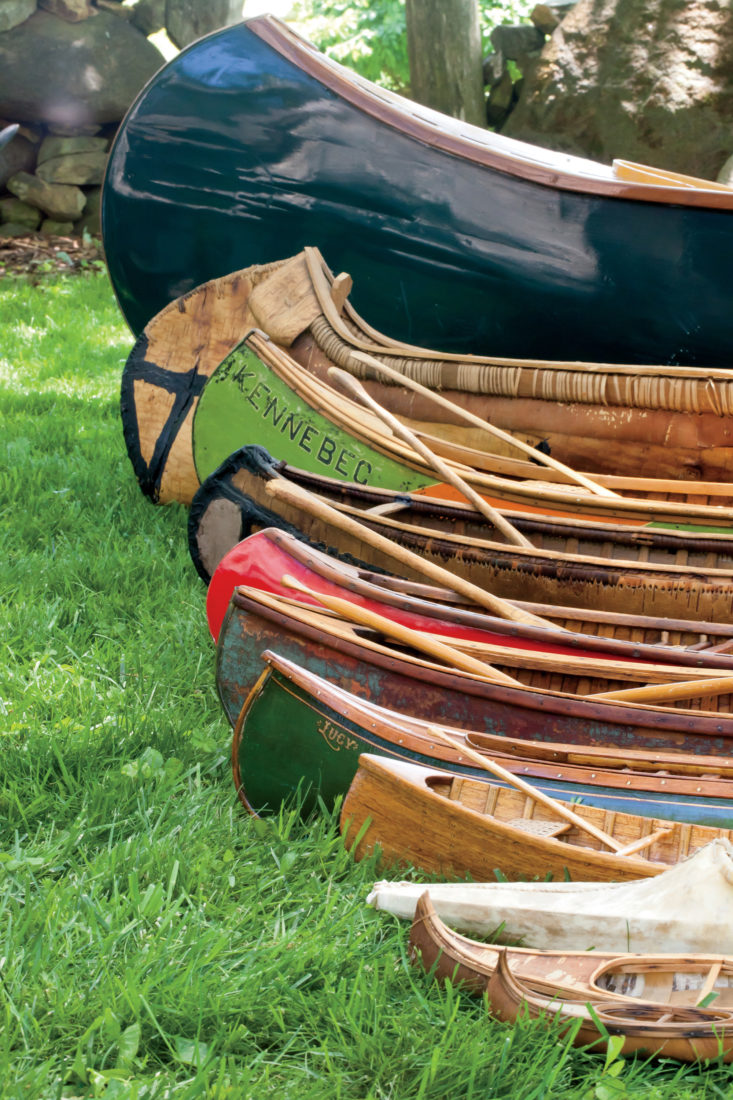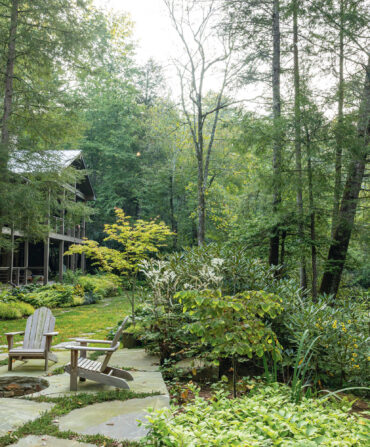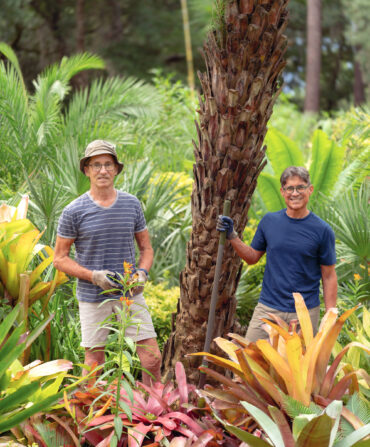If there is such a thing as a famous canoe in the South, this is it. Clad in birch bark, spackled with red clay mud from North Carolina, the boat was paddled across High Rock Lake by Iron Eyes Cody, the famous “crying Indian” of the old “Keep America Beautiful” television campaign. It now hangs in the Lexington, North Carolina, gallery of artist and furniture designer Bob Timberlake, who saw the canoe nearly forty years ago while on a father-son canoe trip.
“That’s the one that did it,” the seventy-four-year-old Timberlake says with a chuckle. “I’d been collecting canoe miniatures all my life, but that old birch-bark canoe really sparked my interest in gathering up the full-size boats.” His flotilla today is perhaps the largest and most important private collection of antique canoes and rowboats in the South.
A protégé of Andrew Wyeth’s, Timberlake has enjoyed an astonishing career based on artistic expressions of both form and function. In 1973 he was the first artist to sell out a one-man exhibition at the prestigious Hammer Galleries in New York, and ever since he’s been one of North Carolina’s most prodigious painters and designers. His introduction of the World of Bob Timberlake collection of home furnishings in 1990 was an enormous success. And he’s launched a new furniture collection with Hickory, North Carolina–based Century Furniture.
All of these endeavors—be they canvases or case goods—spring from an obsession with sporting pursuits and a love of nature. Timberlake is an avid quail and turkey hunter and a die-hard trout angler. His interest in canoes is rooted in a childhood spent roaming the woods and old tenant farm fields of North Carolina’s rolling, rural Davidson County. When his older brother, Tim, joined the Boy Scouts, Timberlake was fascinated with his trips to the woods. “Before I could say ‘paddle’ or ‘hatchet,’ I would draw and paint outdoor scenes, and imagine myself out there.”

Photo: Taylor Mathis
Timberlake with one of his many miniatures.
Timberlake’s canoe collection spans his life as a collector. On childhood trips to the Great Smoky Mountains, he bought toy canoes as fast as he could save allowance money. “You couldn’t display sixteen-foot canoes on your bedroom dresser,” he says, “so I started off with the little ones.” By the time he was selling out limited-edition lithographs, his interests had turned to highly collectible manufacturer’s samples of canoes—eighteen-inch to eight-foot scale models of turn-of-the-century brands covered in leather, birch bark, planking, and canvas. Now Timberlake oversees a studio complex dotted with nineteenth-century barns and buildings, plus galleries and home stores in his native Lexington and Blowing Rock, North Carolina. “These days I have a few places to hang canoes,” he says, grinning, “so I guess it’s gotten a little out of hand.”
Even though Timberlake consolidated his collection through a large private auction in 2006, and a tragic fire at his boat restorer’s shop destroyed another eight historic full-size canoes, his assemblage of antique canoes still numbers thirty boats or better. The oldest boat in the collection is an all-cedar Ontario craft built by the Rice Lake Canoe Co. in 1881. He has some of the most famous wood-and-canvas canoe models ever built, including a Chestnut Prospector and a pair of E. M. White Guide boats. “Bob’s collection emphasizes sporting boats,” says Clayton “Corky” Gray, a canoe and small-boat restorer who owns High Rock Boatyard and works extensively on Timberlake’s collection. “He wants his canoes to be authentic and real.”
“Let me tell you what I love about these old boats,” Timberlake says, running his hands along the gunwale of a wood-and-canvas hull. “I look for character, and a sense of worn-ness and used-ness in an old canoe. I don’t like the ones that look perfect. The flaking paint and yellowed varnish—all of that is just part of a canoe’s story, and I guess I like the stories as much as I love the boats themselves.”
Consider a pair of his favorite canoes, two birch-bark salesman’s samples he bought about twenty years ago. The craft had been found in an old trading post whose owner had padlocked the door and walked away to fight during World War II. The soldier never returned from the front lines, and his family hadn’t opened the shop for decades. “Those canoes were still hanging in the trading post, like ghosts, waiting for someone to realize they were still alive,” Timberlake says. “I hear a story like that, and I just can’t help myself.”








